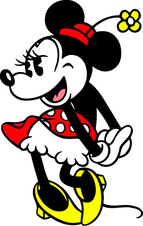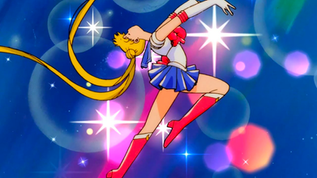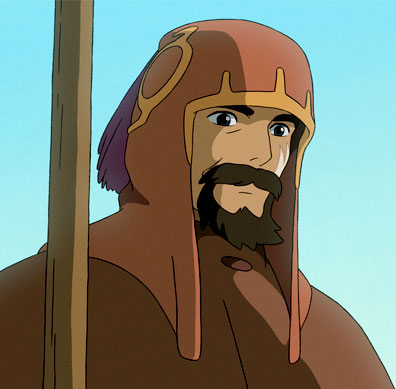Issues of Representation - Week 4
- Em New

- Feb 13, 2022
- 7 min read
Lectures
This week we doubled up on what we were scheduled to have as well as the lecture we missed in week 2, looking at Gender in the first half, and Race in the second. As a warning there are racist images in this post to acknowledge the history of animation as a vehicle for prejudices.
Throughout the history of animation men have been portrayed as muscular and brave, and women as passive and in need of rescuing. Characters like He-Man, with their triangular bodies have kept reoccurring. Popeye almost parodied these standards, giving him big beefy arms but a thin body. This has altered slightly, though, even if you still often see the triangular man saving the girl, films like Beauty and the Beast use the same body shape for the Beast, but his masculinity is a curse, not a gift.
Other, more recent animation has explored younger men with different body types, who use their compassion and sensitivity to save the day instead of their brawn. Other cartoons have explored dynamics too, including Transformers Rescue Bots, which both has powerful female characters, yet still has a white boy as the protagonist, and features several female characters defined by their boyfriends/husbands. It also follows the stereotypical male roles of 'jock', 'nerd', 'dad' being the only roles a male character can fulfil.
'Boopism' is a term used to refer to characters like Betty Boop and Minnie Mouse, where female characters are both juvenile-looking and sexualised at the same time. I think it was something that I was aware of before the lecture but now that it's been properly pointed out it's a much more noticeable thing.
The Bechdel test can apply to all forms of media, but in animation there is a unique test called the Smurfette Principle, where the female character's trait is just that they're female.
We began the lecture on race in a similar way, looking at the prevalent animation history, which is that 20th century animation was largely produced by white American men and created as cel artwork at Disney. After WW2 gender and race representation became more acknowledged, but during the war studios created propaganda that was directly hurtful to specific groups, like in 'Bugs Bunny Nips the Nips' (1944), stills shown below.
Disney has used negative racial stereotypes within their animation too, like their representation of Native Americans in Peter Pan, the black centaurs in Fantasia (who they later edited out to look white, which is questionable as well), and the 'chopsticks' moment in Aristocats.
Another thing to consider with representations of race is whether thee media is meant to be provocative or not, shows like South Park call themselves provocations, making the viewer think past what they're showing and consider why they presented it. However, where do you draw the line between provocation and prejudices? How can you tell when a show or film is earnest when it says that it is provocation? Especially when the creators are not from the group that are being marginalised. Cartoons exaggerate by their nature, it can be made to ridicule, just a design choice, or potentially malicious. Early animation was strongly influenced by vaudeville 'minstrels', down to the blackface and white gloves.

In the 50s negative representation diminished, but it wasn't replaced with positive representation, there simply wasn't any. What we don't see should be of equal concern. It was in the 70s that more black characters were introduced in animation again, and shows like Sesame Street started broadcasting where the creators pushed for all cultures to be represented.

Overall, representation within animation is always a deliberate and active choice, and there are still issues, especially in mainstream animation. Aladdin and Jasmin look more 'Western' and disney-fied than the bad guys in Aladdin, who play on negative Middle-Eastern stereotypes, and the villain of Despicable Me 2, El Macho, is a load of Latino stereotypes piled into one character.
But more positive representations of people of colour have begun emerging within animation as more people of colour have been able to get into the industry themselves.
When animation can be anything, why perpetuate stereotypes?
Brainstorming
As the formative is coming closer I've been trying to think of what my essay and film subject could be. Next week we would be having the disability talk but due to industrial action we'll not be having it so it gives me time to think on what I present the next week after looking through the lecture slides on Learn.

This is the mind-map I made to consider what options I had. It needs to be a subject I feel like I can write a lot on and remain passionate on the subject throughout, as well as being a subject that I can see myself making a film from. The three ideas I'm most interested in pursuing are:
Adaptation Problems
Physical Disability in Sci-Fi and Fantasy
Gender Non-Conforming People Finding Themselves in the 'Other'
1.
The problems with adaptations would look at Tales From Earthsea, as I have mentioned before the film lightens the skin of the characters, simplifies their scars, and makes the male characters the focus rather than Therru. I could also bring in other animated adaptations to compare it to, like Coraline, lead by a strong girl, and actually added characters, like Wybie, to help the plot keep moving and to gain an insight into Coraline's mind by having a friend to talk to.
The film I would pair with this is is an animation of my own over the audio of the film, but with the characters more matched to their descriptions in the books. I would work on my own character designs and lip-sync them to the words said in the dubs. I would also potentially animate scenes from the book when Therru uses her magic to show the powers she has fully. I've tried to draw the characters in my own time before anyway so it could be quite fun to go into detail on them.

Although I think I'd really enjoy getting to design the characters in the way I see them and getting to animate them myself would be fun to do, it wouldn't make as interesting a film to watch.
2.
My second thought was on how physical disability is represented in fantasy and sci-fi. Characters who lose a limb often get a robotic or magical replacement, the disability is seen as something that must be 'cured', or the disability itself is something that makes the character a villain. This isn't just in animation, either, in The Witcher series all witches previously had some sort of physical deformity or disability and learn magic to make themselves 'beautiful', accepting only one body type as desirable. There are several characters who are blind within sci-fi and fantasy that gain such increased other senses that they are practically not blind, too, which defies the trait of them having a disability in the first place.
My film that would pair with this would involve me interviewing different people with physical disabilities about the struggles they encounter in a day, at work or uni or school, and how they overcome them, as well as about how they feel about the more fantastical characters out there and how they can or can't relate to them. I would then want to create a talking heads style animated mockumentary interviewing different characters like witches, superheroes and warriors who all have the same disabilities that the interviewees have. I would probably do the interviews and then take what I learnt from them to create a script where some aspects of the everyday are switched out for fantasy/sci-fi aspects e.g. stairs in a uni building being replaced with stairs up the highest tower of the magic school or something similar. I would then of course have to record voice-actors reading these parts, if the original interviewees wanted to voice their fantasy-selves then I would do that, but I know that not everyone is comfortable with that, so I would also possibly need to find voice-actors. I could also make it similar to Midnight Gospel, which is almost a podcast but with animation of otherworldly events happening around it. So I could potentially use the actual recording from the interviews but form a world around them that I then add a couple lines to later if the interviewee is available to record some new lines.

I think this could be a really interesting film to make and watch, I would need to be very organised, however, have a good set of questions to respond to, and try to find contacts of disabled people, as I do't know any personally. Whether I would do this through putting up posters, posting things on social media, or maybe contacting the university's Disabled Students' Campaign society to see if anyone would be interested in being involved, even it's being a consultant on the script to ensure I don't write anything that's not right. I'd probably make this in digital 2D as it would involve several characters and I'm imagining it with some really fun and vibrant colour palettes.
3.
My last option is writing about how gender non-conforming people find themselves in the 'other'. By this I mean robots, androids, monsters, aliens and other non-human creatures. These creatures and machines are often designed in pretty gender neutral ways whilst all other characters, especially in mainstream media, are very gendered. There is the universal experience of the queer community feeling 'other', too, as up until recently there hasn't been much queer representation in anything, so many audiences, not just queer audiences, found themselves within the characters that the rest of the cast struggles to understand fully.
I do find this subject interesting, but I don't know exactly what my essay would be looking at for it, maybe the lack of gender non-conforming characters and how gender non-conforming audiences have to search for the characters with a more vague visual gender, or have transformative aspects to them.
The film idea I have for this is basically me recording myself as I vent about my gender experience, and have a robot animated over it as if they are talking about their gender experience. I would probably want to do this in stop-motion as I always prefer robots and monsters when they're made of real materials.


I think it's likely I'll present the 2nd and 3rd ideas during the formative presentation and see if the class is more drawn to one idea. In the meantime I'll keep drawing some concept art for each of them, and start looking into potential readings and primary research I could do.














































































































Comments